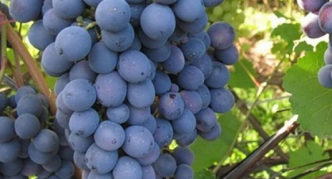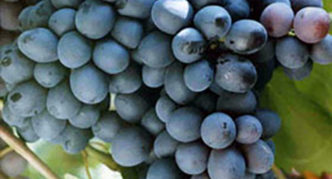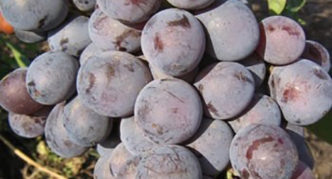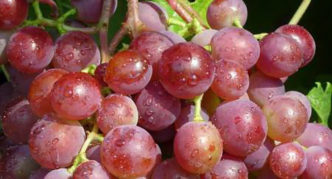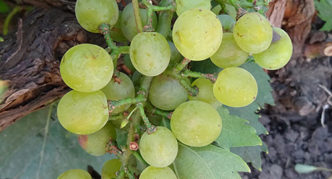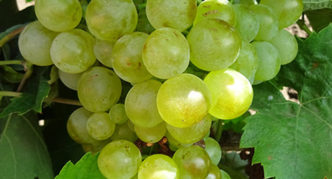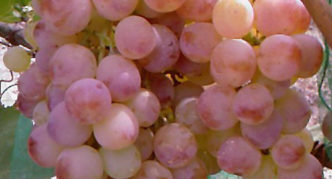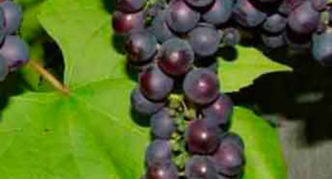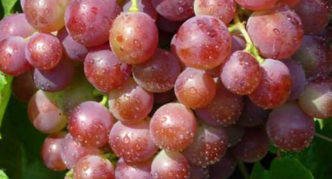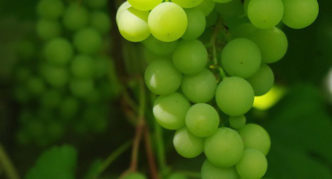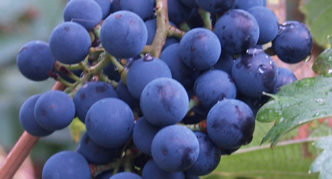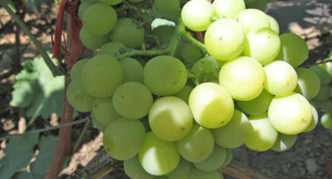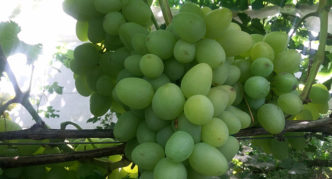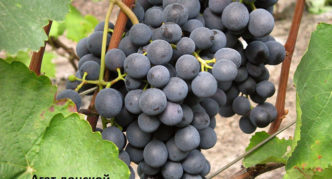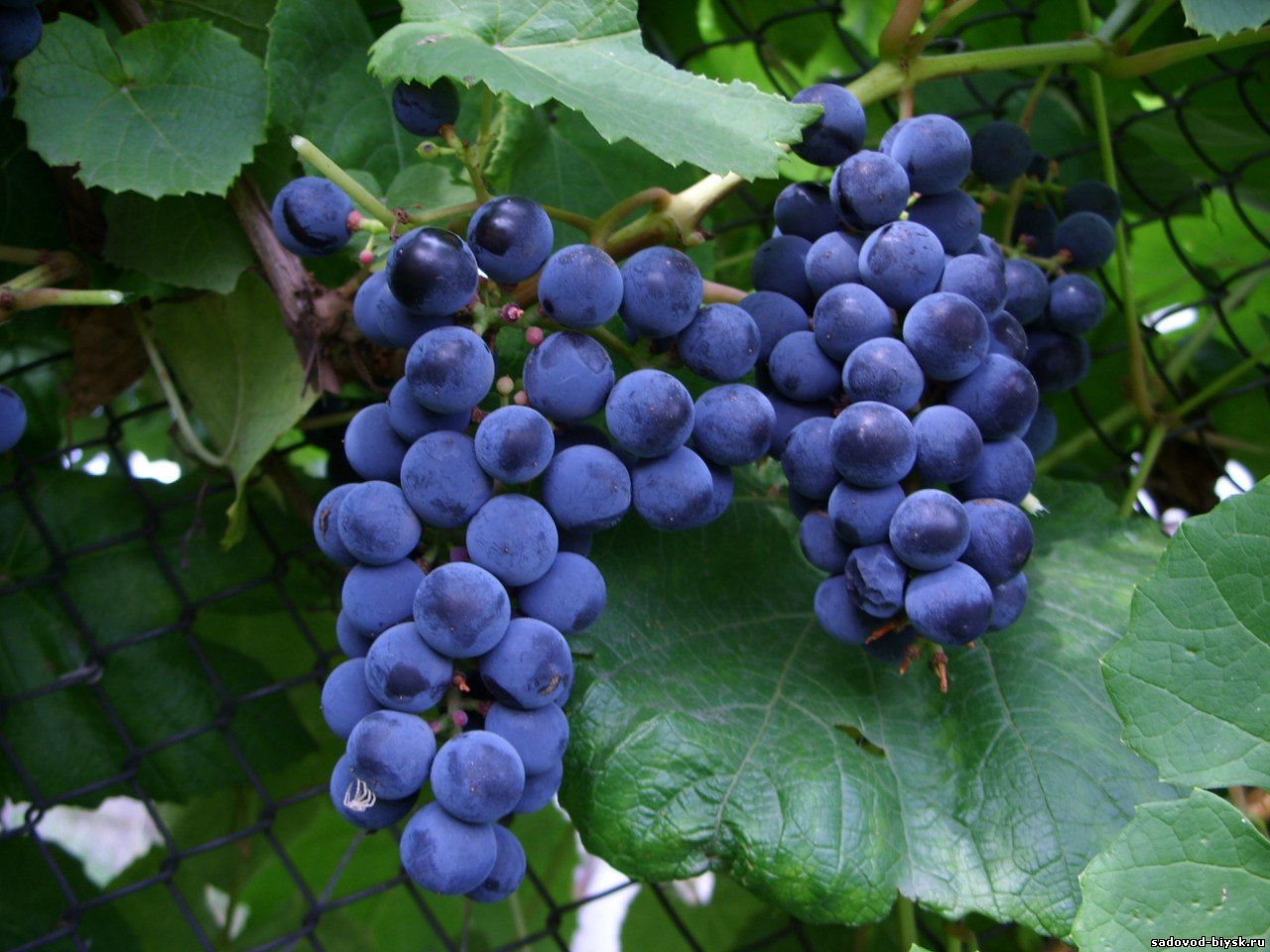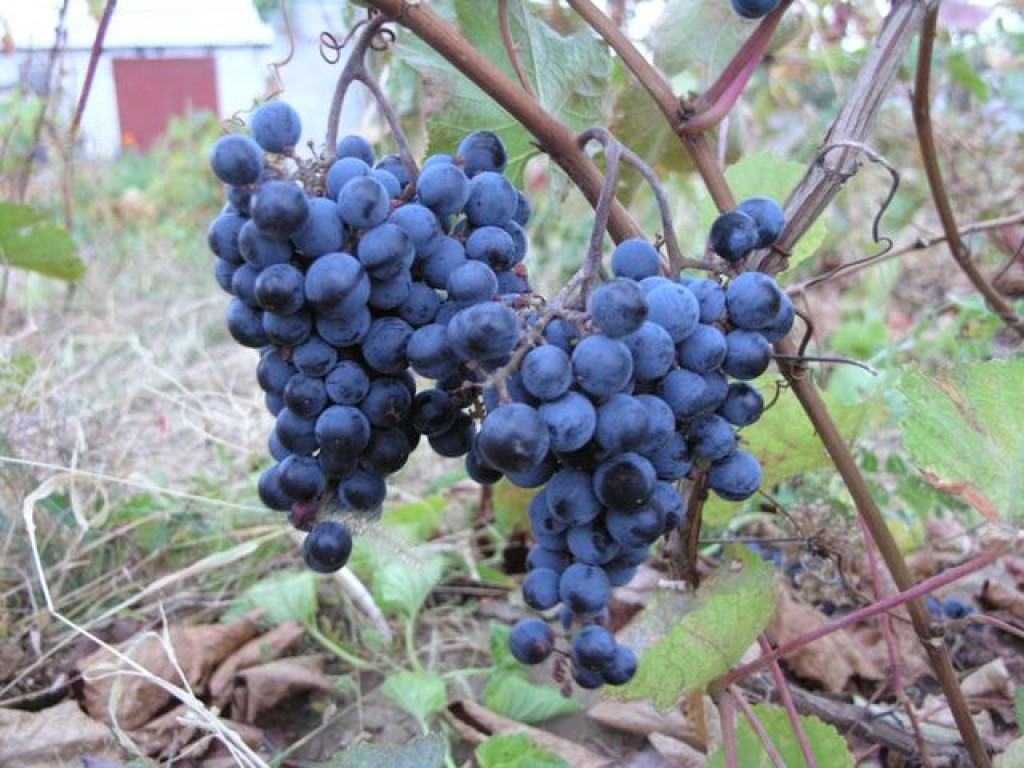Among the varieties of modern breeding, often grown in summer cottages and household plots, there are many of those whose ancestry comes from Amur grapes. They are both fruitful and winter-hardy, and they resist diseases perfectly. One of these grapes is Agat Donskoy, which will be discussed.
Content
Pedigree Agatha Donskoy
The Agat Donskoy variety was developed by the Novocherkassk Research Institute of Viticulture and Winemaking. It is interesting that if you trace the entire pedigree of this grape, then along all the lines among its close or more distant ancestors was the Amur wild grape - a plant very resistant to low temperatures and various diseases.
Agate was obtained from the crossing of an early Russian with the brainchild of a pair Zarya Severa and Dolores.
Russian originated from the pair Michurinets and Shasla severnaya, and Michurinets was derived from the crossing of wild Amur grapes with the Getsh variety (Malengr early).
Shasla Severnaya was obtained by crossing Shasly pink with the Severny variety, which, in turn, has the ancestors of the Malengra Seedling and Amur wild grapes.
Dolores was bred by crossing Galan grapes with a descendant of the pair Nimrang and Amur. The last of the named varieties is a direct result of intraspecific crossing of wild Amur grapes.
The dawn of the north is also the result of crossing the Amursky variety, but with the Malengra seedling grape.
Agat Donskoy and his ancestors in the photo
- Donetsk Agate grape
- Dawn of the North grapes
- Dolores grapes
- Amur wild grapes
- Russian early grapes
- Amur grapes
- Chasselas pink grape
- Grape Seedling Malengra
- Galan grape
- Nimrang grape
- Grape Michurinets
- Shasla grape northern
- Gotesh grapes
- Northern grapes
More about Agatha Donskoy
The result of the multi-step combination of varieties briefly described above was the table grape Agat Donskoy with high winter hardiness - in a bare culture, it normally tolerates frosts down to -26 ºС. At the same time, the plant is characterized by increased resistance to downy mildew and gray rot, stable high yield.
Large loose, sometimes even loose bunches of Don Agate weigh about 0.4–0.5 kg. They consist of large round berries, 4-5 g in weight, covered with thick dark blue skin. Their taste is ordinary, but very pleasant.
Since 1987, Agat Donskoy has been undergoing state variety testing and in 1992 was included in the State Register as a variety recommended for the Ural and North Caucasus regions.
The distributors of the planting material of this variety note that its tasting score is 7.7 points. A ripe crop can be harvested 115–120 days after bud break.
Agate's flowers are bisexual, which eliminates the problem of stable pollination. Bushes are vigorous. Out of the number of shoots, up to 80% are fruitful, each of them accounts for up to one and a half bunches, that is, the variety is prone to overloading the crop, its rationing is necessary.If you do not carry out this operation, the grapes will ripen later, and their taste will deteriorate.
Ripe berries accumulate up to 13-15% sugar and 6-7 g / l of titratable acid.
High frost resistance, when no more than 10–20% of the shoots may be damaged, allows in some areas where grapes are grown in a covering culture, to grow Agate without shelter for the winter.
It is recommended to cut off shoots by 5-8 buds, with a total load of 35-45 eyes of the bush.
Planting and leaving
Planting these grapes is no different from this operation with other varieties. The seedlings are placed in pre-prepared pits, dug at a distance of at least 3 meters from one another, at the bottom of which two buckets of humus are introduced. On black soil, the dimensions of the pit are about 0.5 meters, on sandy soils - from 0.7 to one meter.
The indispensable conditions for growing Agat Don grapes are:
- Mandatory formative pruning. The total number of eyes left on the bush should not be more than 35–45, and on the shoot –5–8.
- Rationing of the number of clusters on the shoot (no more than two are left after fertilization).
- Removal of excess shoots in two stages: 1) before flowering on woody parts of the plant, when new branches reach a length of 6 cm; 2) at the beginning of flowering of barren shoots.
- Tying vines according to their growth.
- Regular mandatory watering of at least seven buckets under the bush: before flowering, after flowering, during the period of pouring berries. at elevated air temperatures, additional irrigation is carried out. They are stopped half a month before harvesting so that the berries do not burst.
- Loosening of the land under the grapes with simultaneous removal of weeds is carried out after each watering or heavy rainfall. An alternative is to mulch the near-trunk soil with a layer of organic matter (humus, cut grass, and others) at least 5 cm thick.
Agate Donskoy grape care (video)
Comparison with other varieties
To see if the Agate Don grapes have any advantages over similar varieties, one can only compare their characteristics. For example, let's take Lunny and Chrysolite - grapes of about the same ripening period, recommended by the state registry for cultivation in all regions. Unfortunately, some parameters are not given in the description of the FGBU "State Sort Commission". The data has been supplemented with information from the Internet.
Table: Don Agate, Lunny and Chrysolite
| Donskoy agate | Lunar | Chrysolite | |
| Appointment | Dining room | Dining room | Dining room |
| Ripening period (days) | 115–120 | 105–120 | 125–130 |
| Harvest (average per hectare of vineyard) | 15 t | 14.2 t | 23.95 t |
| Average weight of bunches | 400-500 g | 500 g | 600 g |
| Berry weight average | 4-5 g | 5-7 g | 15 g |
| Taste | Plain | With light nutmeg | With a nutmeg flavor |
| Tasting assessment | 7.7 points | 8.0 points | 8.6 points |
| Frost resistant | -26 ºС | -22 ºС | -23 ºС |
| Disease resistance | Increased | Increased | Average |
The collected information testifies that the only indisputable advantage of the Don Agatha is its resistance to frost and the consequent possibility of its cultivation in a non-sheltered culture on the territory of certain regions. It only slightly surpasses the yield of Lunny, but is significantly inferior in this indicator to Chrysolite, which is tastier than it according to tasters, but it is easier to get sick.
Agate and his rivals in the photo
- Lunny variety
- Chrysolite grade
- Donskoy agate variety
Reviews of winegrowers growing Agate Donskoy
Agate Donskoy in Serpukhov grows very well. Mildew does not get sick, ripens in any weather, the vine ripens well, the berries are sweet, winters well. Only positive reviews. For open ground - it is better not to find. The taste is, of course, rustic; in cold, damp years, sourness appears.
This variety has been growing for me for 15 years and I am not going to give it up. I consider this variety one of the best for the conditions of Penza, even though our city is 400 km south of Moscow.Observing it for many years I can only confirm its exceptional stability and reliability. Pollinated in any weather and always with a harvest! Almost does not crack after rains and is slightly damaged by wasps, because it has a dense skin. The first years, when the bush was young, the clusters and berries were not large, but then, apparently due to the collection of perennial wood, the size of both clusters and berries increased dramatically. In recent years, there have been clusters of up to 800 grams. Berries are stable 5–6 gr. And the taste of it quite satisfies me, you just need to hold it on the bush as long as possible.
Agat Donskoy has no problems with this, almost every bud is fruitful. And the yield of Agatha Donskoy is about 150 centners. from ha. And frost resistance at a high level. It seems to me that a small bunch is a genetic feature of the variety and there is nothing you can do about it. Of course, if you leave ten shoots per adult bush, and one cluster per shoot, then they will be larger.
Agate Donskoy is good, but inferior in taste. The taste is mediocre. Usually in compote, no more. With a short pruning and normalization, it turns out to be larger and tastier, but still LAGGER from the same KODRYANKA. PROS ... .. Never gets sick. Hibernates without shelter and without loss.
Due to the resistance of the variety to diseases and frosts, Agate Don can be grown in almost all regions, and its high yield is an additional attractive moment for novice winegrowers.
